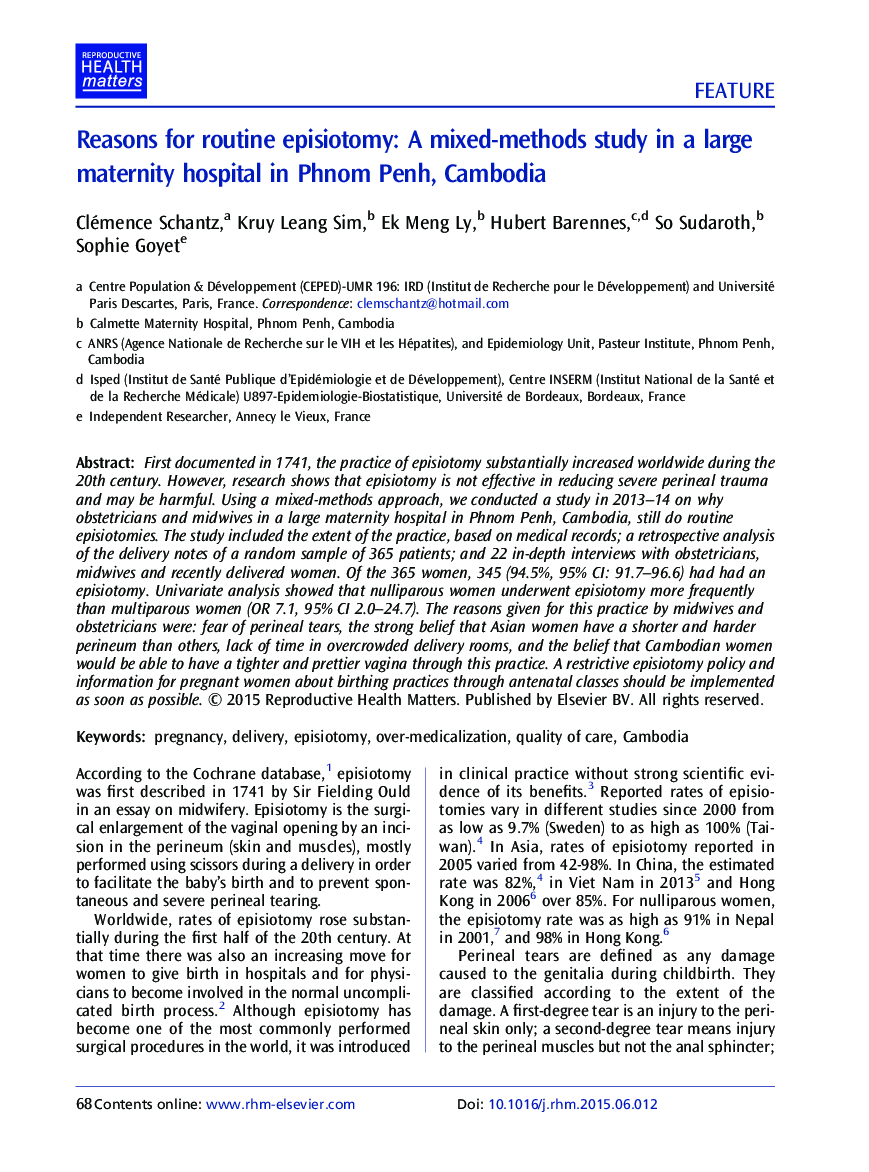| Article ID | Journal | Published Year | Pages | File Type |
|---|---|---|---|---|
| 1090111 | Reproductive Health Matters | 2015 | 10 Pages |
First documented in 1741, the practice of episiotomy substantially increased worldwide during the 20th century. However, research shows that episiotomy is not effective in reducing severe perineal trauma and may be harmful. Using a mixed-methods approach, we conducted a study in 2013–14 on why obstetricians and midwives in a large maternity hospital in Phnom Penh, Cambodia, still do routine episiotomies. The study included the extent of the practice, based on medical records; a retrospective analysis of the delivery notes of a random sample of 365 patients; and 22 in-depth interviews with obstetricians, midwives and recently delivered women. Of the 365 women, 345 (94.5%, 95% CI: 91.7–96.6) had had an episiotomy. Univariate analysis showed that nulliparous women underwent episiotomy more frequently than multiparous women (OR 7.1, 95% CI 2.0–24.7). The reasons given for this practice by midwives and obstetricians were: fear of perineal tears, the strong belief that Asian women have a shorter and harder perineum than others, lack of time in overcrowded delivery rooms, and the belief that Cambodian women would be able to have a tighter and prettier vagina through this practice. A restrictive episiotomy policy and information for pregnant women about birthing practices through antenatal classes should be implemented as soon as possible.
